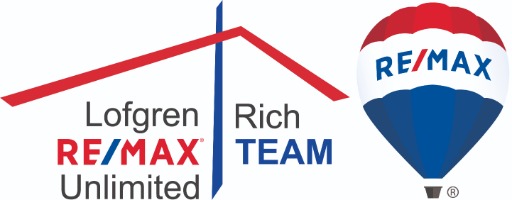Florida Duskywing moth by Amy Howard
Mission
To cultivate an attractive and educational garden walk on the SPVCA grounds using plants native to South Ponte Vedra.
The business and purpose of this corporation shall be charitable and educational, for advancing public knowledge concerning the flora and fauna of the marine, littoral and dry land environment pertinent to the area of St. Johns County, Florida, known as South Ponte Vedra. This corporation shall be dedicated to public education relevant to the employment of this environment for human habitation, recreation, and fisheries development consistent with reasonable preservation of the natural environment.”
1974 ARTICLES OF INCORPORATION OF THE SOUTH PONTE VEDRA ASSOCIATION
| 1974 | SPVA’s Articles of Incorporation say our purpose, in part, “shall be charitable and educational, for advancing public knowledge of the flora and fauna of… South Ponte Vedra and preservation of the natural environment.” |
| 1979 | Florida Department of Agriculture published a booklet, Coastal Plants of Florida | A Key to Good Land Management “to encourage the proper management of Florida’s coastal lands.” |
| 1982 | J.W. Goodwin deeded a portion of SPV beach to the county on the condition “The County shall at all times maintain a 25 foot wide buffer zone… consisting entirely of native vegetation.” |
| 1985 | Jacksonville engineers and Army Corp of Engineers advised SPVA president Laura Torrey that native vegetation will stabilize the upper beach better than fencing. |
| 1986 | Florida law prohibited driving on “native stabilizing vegetation of the dune system of coastal beaches”. |
| 1987 | Florida Statutes included section 581.185 Preservation of Native Flora. |
| 1988 | Florida C.A.R.L. project described the GTM Reserve as excellent oceanfront beach with high dunes stabilized by native vegetation, maritime hammocks, wetlands, pine flatwoods, and bird rookeries. |
| 1988 | The Florida CRPP Advisory Committee said “To protect the quality and quantity of surface waters… buffer zones should consist of… native species in the canopy, shrub and understory layers.” |
| 1989 | Florida law said “Construction in coastal areas shall… provide protection to nesting sea turtles and hatchlings… and to native salt resistant vegetation and endangered plant communities.” |
| 1989 | Florida’s lease to SPVA specified “No trees, other than non-native species, shall be removed.” |
| 1991 | SPVA’s John Underwood noted Guana should qualify for Coastal Zone Protection that “Prohibits vehicular traffic on the dunes and native stabilizing vegetation of the dune system.” |
| 1991 1992 | A Coastal Construction permit required: “Any native salt-resistant vegetation… removed for construction shall be replaced with native salt-resistant vegetation.” |
| 1993 | SPVA’s John Underwood asked DNR to prohibit driving on SPV beach to establish native stabilizing vegetation. |
| 1998 | Florida DEP said it is “the policy of FDEP… to remove exotic species from native natural communities.” |
| 2000 | St. Johns River Water Management District said restoration is partly measured by a reduction in nonnative species. |
| 2002 | A citizens group gathered to design Bird Island Park to highlight native flora and fauna. |
| 2006 | SPVA became SPVCA “to more correctly reflect our… purpose” that included “preservation of the natural environment”. |
| 2006 | SPVCA members cultivated native plants at the club: Hugh Eubank, Inna Heilman, Ed Olsen, Joe Hutnan, Royce and Jo Shafter, Nick and Carol Vander Wal, Nancy Frohardt, and Bentley Burnham. |
| 2006 | The Scenic Highway A1A Project solicited native plant design ideas for South Ponte Vedra Beach Park. |
| 2007 | The Friends of AlA Scenic and Historic Coastal Byway received a grant to plant wildflower seeds in Ponte Vedra. |
| 2008 | The SPVCA newsletter encouraged members to attend a Family Fun Event at Bird Island Park’s native garden. |
| 2011 | Maintenance chair Mike Preusser reported that non-native plants at the clubhouse were dying because the well water contained 100 times more salt than normal. He hand-watered with city water for a temporary fix. |
| 2013 | St. Johns County hosted a workshop on Invasive Plants and AlterNatives. |
| 2013 | The SPVCA newsletter said incorporating native plants provides a welcoming habitat for birds. |
| 2019 | JEA suggested on our water bill: “Replace some of your water-intensive plants with natives.” |
| 2020 | Landscape chair Chris Rich reported the native dune daisies were thriving in the front yard with little water. |
| 2020 | Board president Andy Kitts commended Chris Rich for spearheading a native landscaping effort. |
| 2021 | Chris Rich wrote articles on native plants in her newsletter column: Some Saw Palmetto are 500 years old. Saltbush attracts butterflies. Sumac berries taste like pink lemonade. Since our building sits on the GTM Reserve Land, we try to use as much native vegetation as possible. [We now have] Porterweed, Powderpuff Mimosa, Beach Sunflower, Blanket Flower, and Firebushes. |
| 2021 | Chris Rich reported her team’s attempts to kill the invasive Wedelia. |
| 2023 | Debbie Hegland bought more native plants for the club. |
| 2024 | A Native Garden Club was established at SPVCA. |
Please join us for learning, designing, pruning, and weeding.
Tuesdays at 4:00
Contact Amy Howard for more information.


